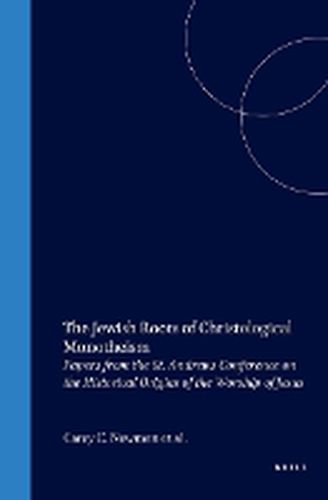Readings Newsletter
Become a Readings Member to make your shopping experience even easier.
Sign in or sign up for free!
You’re not far away from qualifying for FREE standard shipping within Australia
You’ve qualified for FREE standard shipping within Australia
The cart is loading…






Although there are many studies of second Temple Judaism (in general) and of Christianity’s relationship with Judaism (in particular), there has not been a sustained and comprehensive investigation of the way in which Christ-devotion in the first two centuries of the common era represents a manifestation of Jewish monotheism. This volume fills this gap in four distinctive ways: (1) by re-examining the theological force of monotheism during the Second Temple period; (2) by retracing the historical steps of Christianity’s adaptation / mutation / re-definition of Jewish monotheism; (3) by exploring and debating the influence of non-Jewish traditions on this process; and (4) by mapping the ways in which Christianity’s unique appropriation of Jewish monotheism helps explain the intriguing relationships among emerging Christian, Jewish and Gnostic communities. In particular, the eighteen essays demonstrate how the creation mythic of narratives, the revelatory power of mystical experiences, and the sociology of community formation capitalized on the Jewish meditoral tradition to encourage and legitimate the Christian praxis of Christ-devotion.
$9.00 standard shipping within Australia
FREE standard shipping within Australia for orders over $100.00
Express & International shipping calculated at checkout
Although there are many studies of second Temple Judaism (in general) and of Christianity’s relationship with Judaism (in particular), there has not been a sustained and comprehensive investigation of the way in which Christ-devotion in the first two centuries of the common era represents a manifestation of Jewish monotheism. This volume fills this gap in four distinctive ways: (1) by re-examining the theological force of monotheism during the Second Temple period; (2) by retracing the historical steps of Christianity’s adaptation / mutation / re-definition of Jewish monotheism; (3) by exploring and debating the influence of non-Jewish traditions on this process; and (4) by mapping the ways in which Christianity’s unique appropriation of Jewish monotheism helps explain the intriguing relationships among emerging Christian, Jewish and Gnostic communities. In particular, the eighteen essays demonstrate how the creation mythic of narratives, the revelatory power of mystical experiences, and the sociology of community formation capitalized on the Jewish meditoral tradition to encourage and legitimate the Christian praxis of Christ-devotion.